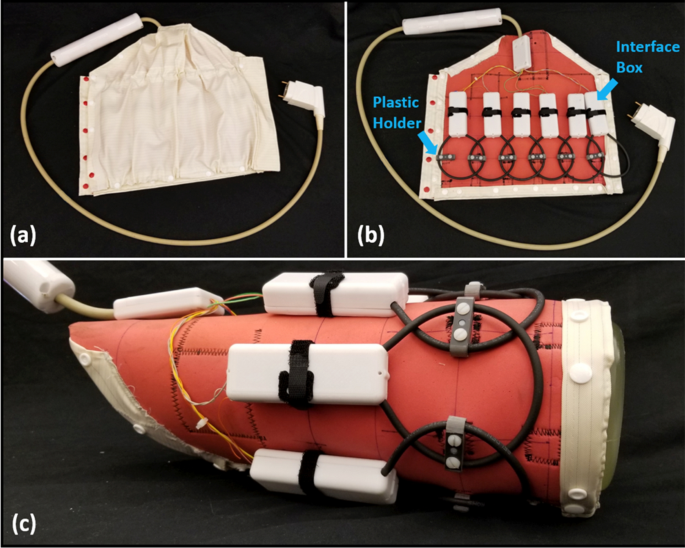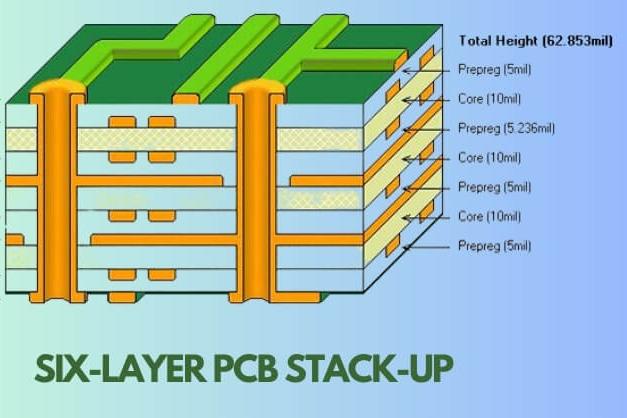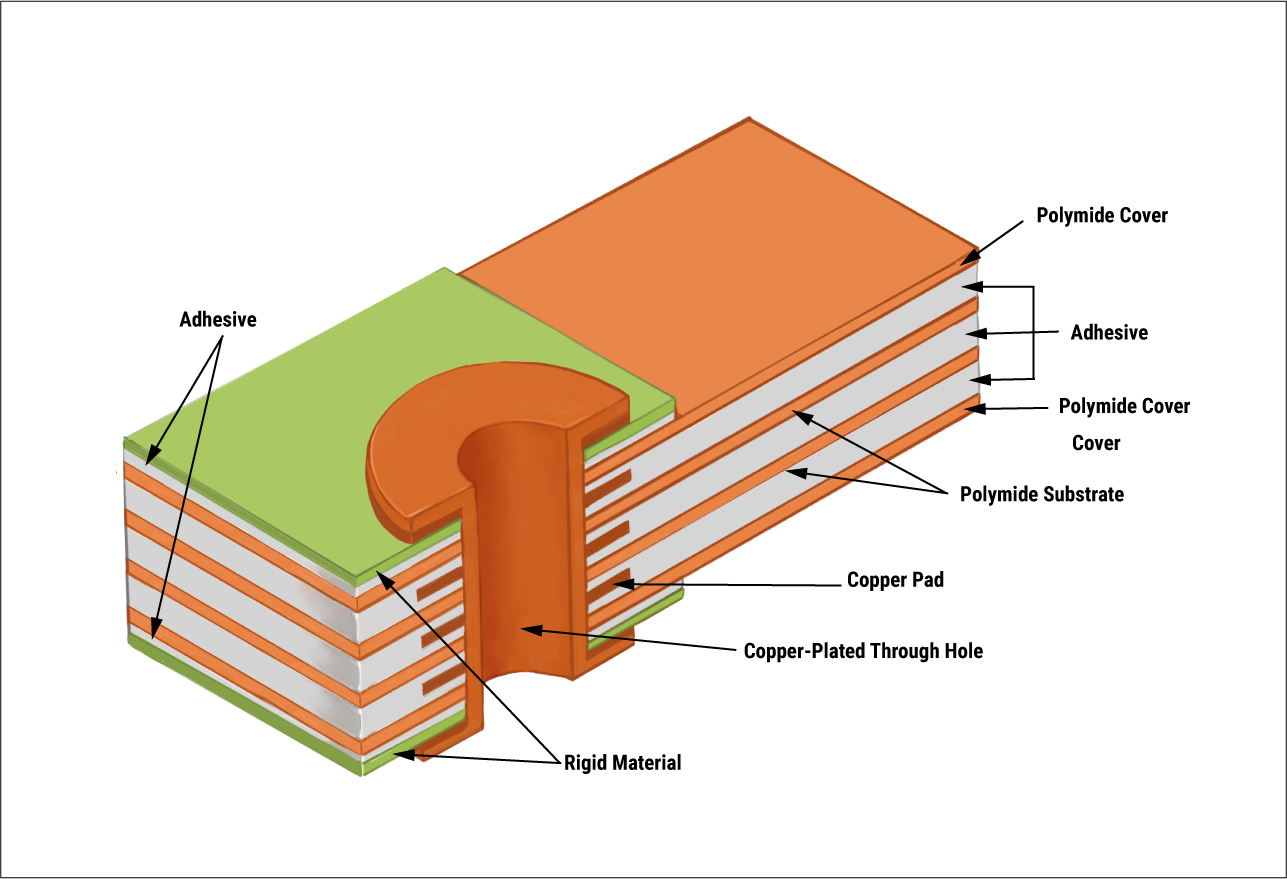In the fast-evolving world of medical imaging, flexible PCBs for MRI coils are revolutionizing the way we achieve high-quality scans while ensuring patient comfort. If you're searching for solutions like "flexible PCB for MRI coil" or "MRI coil PCB design," you're in the right place. This blog dives deep into how flexible printed circuit boards (PCBs) are used in MRI coil manufacturing, the materials involved, and how they improve both image clarity and the patient experience. Let's explore the benefits, design considerations, and manufacturing processes that make these components vital in modern medical technology.
What Are Flexible PCBs and Their Role in MRI Coils?
Flexible PCBs are thin, lightweight circuit boards made from bendable materials that can conform to various shapes. Unlike rigid PCBs, they offer adaptability, making them ideal for applications like MRI coils where space and fit are critical. In MRI systems, coils act as antennas that detect radio frequency signals emitted by the body during a scan. These signals are then converted into detailed images for diagnostic purposes.
Using a flexible PCB for MRI coil design allows the coil to mold closely to the patient's body, whether it's for a knee, shoulder, or head scan. This close contact boosts the signal-to-noise ratio (SNR), a key factor in image quality, often by 20-30% compared to traditional rigid coils, as noted in studies on advanced MRI technologies. Additionally, their lightweight and adaptable nature reduces discomfort, making long scanning sessions more bearable for patients.

Benefits of Flexible PCBs in MRI Coil Design
Flexible PCBs bring several advantages to MRI coil applications, directly impacting both performance and user experience. Here are the key benefits:
- Improved Image Quality: The ability of flexible PCBs to conform to the body minimizes the distance between the coil and the tissue being scanned. This proximity can enhance SNR, leading to sharper images with better resolution. For instance, a well-fitted coil can improve signal detection efficiency by up to 25%, crucial for diagnosing subtle abnormalities.
- Enhanced Patient Comfort: Traditional rigid coils often require padding or awkward positioning, which can be uncomfortable during scans lasting 30-60 minutes. Flexible PCBs, being lightweight and moldable, reduce pressure points and adapt to the patient’s unique shape.
- Versatility in Design: These PCBs can be tailored for various body parts, from small coils for wrists to larger arrays for torso imaging, without compromising on performance.
- Reduced Motion Artifacts: Since flexible coils fit snugly, they help minimize patient movement, reducing motion-related distortions in images.
Key Considerations in MRI Coil PCB Design
Designing a flexible PCB for MRI coils requires careful attention to technical and practical factors. Here’s what engineers focus on during the "MRI coil PCB design" process:
1. Circuit Layout and Signal Integrity
The layout of the PCB must ensure optimal signal reception with minimal interference. Engineers often design multi-channel coil arrays (e.g., 16 or 32 channels) to enable parallel imaging, which speeds up scan times by 40-50% while maintaining image quality. Maintaining low impedance, typically in the range of 50 ohms for RF signals, is critical to avoid signal loss.
2. Flexibility and Durability
The PCB must withstand repeated bending without cracking or losing conductivity. This requires selecting materials that balance flexibility with strength, ensuring the coil can be used thousands of times without failure.
3. Size and Weight
Smaller, lighter coils are preferred for patient comfort. A typical flexible PCB for an MRI coil might weigh less than 100 grams, compared to rigid alternatives that can weigh over 500 grams, making a noticeable difference during extended scans.

MRI Coil PCB Materials: What Makes Them Unique?
The choice of materials in "MRI coil PCB materials" is pivotal for performance, flexibility, and safety. Here are the primary materials used and their roles:
- Polyimide Film: This is the most common base material for flexible PCBs due to its excellent thermal stability (up to 400°C) and flexibility. It ensures the PCB can bend without breaking, even after thousands of cycles.
- Copper Foil: Used for conductive traces, copper foil (typically 18-35 micrometers thick) provides high conductivity for RF signal transmission. Its thin profile maintains the PCB’s lightweight nature.
- Coverlay: A protective layer over the copper traces, often made of polyimide or polyester, safeguards against environmental factors like moisture and mechanical stress while maintaining flexibility.
- Adhesives: Specialized adhesives bond layers without adding bulk, ensuring the PCB remains thin (often less than 0.2 mm in total thickness) and adaptable.
These materials must also be biocompatible and non-magnetic to prevent interference with the MRI’s strong magnetic fields, typically ranging from 1.5 to 7 Tesla. Any ferromagnetic content could distort images or pose safety risks, making material selection a critical step.

Flexible PCB Manufacturing for MRI Coils
The process of "flexible PCB manufacturing for MRI" involves precision and adherence to strict standards, especially since these components are used in medical devices. Here’s an overview of the key steps:
1. Design and Prototyping
Engineers use advanced software to create detailed layouts, simulating signal paths to ensure optimal performance. Prototypes are tested for flexibility, signal quality, and durability before mass production.
2. Material Lamination
Layers of polyimide, copper, and adhesives are laminated under controlled heat and pressure (around 150-200°C) to form a cohesive, flexible structure. This step ensures no air bubbles or misalignments compromise the PCB.
3. Etching and Patterning
Copper layers are etched to create precise circuit patterns for RF signal transmission. This process requires high accuracy to maintain consistent impedance across all channels.
4. Testing and Quality Control
Each PCB undergoes rigorous testing for electrical performance, flexibility (often bent over 10,000 times in stress tests), and compatibility with MRI systems. Standards like ISO 13485 for medical devices ensure reliability and safety.
Manufacturing these PCBs demands cleanroom environments to prevent contamination, as even microscopic particles can interfere with signal quality in high-frequency applications like MRI.

MRI Flex PCB Assembly: Bringing It All Together
The final stage, "MRI flex PCB assembly," integrates the PCB into the coil housing and connects it to the MRI system. This process includes:
- Component Mounting: Surface-mount components like capacitors and inductors (often with values in the picofarad and microhenry range) are soldered onto the PCB to tune the coil to specific frequencies, such as 63.86 MHz for 1.5T MRI systems.
- Integration with Housing: The flexible PCB is embedded into a soft, ergonomic housing that protects the electronics while maintaining flexibility for patient fit.
- Cable Connections: Low-noise coaxial cables are attached to transmit signals to the MRI scanner with minimal loss, ensuring data integrity over distances of 1-2 meters.
- Final Testing: Assembled coils are tested in simulated MRI environments to verify SNR, image uniformity, and patient safety.
Precision in assembly is crucial, as even a 1% deviation in tuning can degrade image quality, leading to diagnostic errors. Advanced assembly techniques, including automated soldering and robotic alignment, help achieve consistent results.
Challenges and Future Trends in Flexible PCB for MRI Coils
While flexible PCBs offer immense benefits, challenges remain in their adoption for MRI coils. High manufacturing costs, due to specialized materials and cleanroom requirements, can be a barrier, with production costs often 30-50% higher than rigid PCBs. Additionally, designing multi-channel arrays with consistent performance across all elements requires ongoing innovation.
Looking ahead, trends point toward even lighter and thinner materials, such as graphene-based conductors, which could reduce PCB weight by another 20%. Advances in 3D printing may also enable custom coil shapes tailored to individual patients, further enhancing comfort and image quality. Moreover, integrating wireless technology into flexible PCBs could eliminate cumbersome cables, streamlining the scanning process.
Why Choose High-Quality Flexible PCBs for MRI Applications?
For medical device manufacturers and imaging centers, investing in high-quality flexible PCBs for MRI coils is a game-changer. Not only do they elevate diagnostic accuracy through superior image resolution, but they also prioritize patient well-being by reducing discomfort during scans. Partnering with a reliable PCB provider ensures access to cutting-edge materials, precise manufacturing, and thorough testing, all of which are essential for meeting the stringent demands of medical applications.
Conclusion
Flexible PCBs are transforming MRI coil technology by enhancing image quality and patient comfort. From innovative "MRI coil PCB design" to specialized "MRI coil PCB materials" and meticulous "flexible PCB manufacturing for MRI," every step in the process is geared toward delivering better diagnostic outcomes. As the medical imaging field continues to advance, these adaptable, high-performance components will play an increasingly vital role. Whether you're an engineer designing the next generation of MRI systems or a healthcare provider seeking reliable solutions, understanding the impact of "flexible PCB for MRI coil" applications is key to staying ahead in this critical industry.



